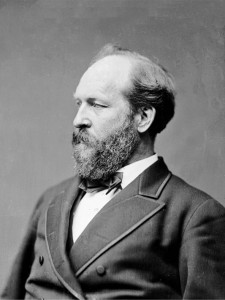© Paul Lachelier 2011. All rights reserved.
I delivered the following remarks on January 27, 2011, as part of a panel of Stetson University faculty speakers discussing violence and civility in American society following the shooting of U.S. Representative Gabrielle Giffords and eighteen others in Tuscon, AZ on January 8.
I’d like to offer a few thoughts on these issues of violence and civility in American society.
ON POLITICAL VIOLENCE
I don’t think it’s safe to say that Americans are more violent now in politics than before. I think it’s safer to say that the United States has experienced ebbs and flows in violence, civil and political, while Americans have had more or less access to guns throughout American history.

One measure of political violence are assassinations of government leaders. The only serving U.S. Congressperson ever to be killed was killed back in 1978, as part of the infamous Jonestown massacre. The first U.S. President to be assassinated was Abraham Lincoln way back in 1865, and two more presidents were assassinated – James Garfield in 1881, and William McKinley in 1901 – before John F. Kennedy was killed in 1963. This is not to mention the scores of attempts and plots to kill presidents that have occurred through much of U.S. history.
By at least this measure then, Americans are not clearly more politically violent now than previously.
ON POLITICAL POLARIZATION
A different and just as interesting question is whether or not Americans are polarizing, or growing more divided politically. On this question, there appears to be more debate.
One one hand, the political scientist Morris Fiorina has made a name for himself by arguing that most Americans are not polarizing, but the small political class of activists and government leaders are growing more polarized.
On the other hand, authors like Michael J. Weiss and Bill Bishop find evidence that Americans are quietly self-segregating into socially and politically more homogenous communities or lifestyle enclaves.
My own sense is this:
a) Americans, like most people, seem to incline to homophily, that is, they like to hang out with people like them. As I tell my students, in life, the reality is not at all that opposites attract. They don’t. Instead, birds of a feather flock together. And interestingly, as the fascinating merging of consumer and political research indicates, people with similar lifestyles often share similar political beliefs (thus, researchers find, Republicans are more likely to own dogs, and Democrats more likely to own cats). The trouble with this seemingly innocuous tendency to hang out with those who are like us is that people who are alike are more likely to become intolerant of difference and extreme in their viewpoints when they are together, especially when they see others as threatening.
b) Fortunately, even if Americans are clustering in communities of like mind and lifestyle, there is evidence that most Americans (not all, but most) incline toward moderation and pragmatism rather than extremism and dogmatism in their viewpoints. Moreover, there is evidence that Americans are becoming more tolerant of social differences as education levels rise, and as younger, more tolerant Americans replace older, less tolerant Americans.
ON THE TENSION BETWEEN PARTICIPATION AND CIVILITY
What kind of citizen is best for democracy? In answering this question, we face an interesting dilemma: research shows that the more active in politics people are, the more they know and become devoted to politics, but also the more their views tend to move to the extremes. In contrast, the less active in politics people are, the less they know and care about politics, but also the more moderate their political views.
Political scholars nowadays are mulling over two types of good citizens: the activist, and the deliberator. The activist is passionate about her/his issue, and works with like-minded others to advance that issue. The deliberator, on the other hand, is calmer, considers conflicting views and information, then forms an opinion.
Moderate Americans would incline to the deliberator rather than the activist. However, some recent research suggests that the deliberator is less likely than the activist to participate in politics in various ways, including voting.
So here’s the question: do we wants more citizen participation, yet also more passion and incivility? Or do we want more moderation, yet also less citizen participation in politics? At least some scholars argue that we can’t have it both ways – we can’t have both high engagement, and civility.
CONCLUSION
As ambivalent the picture I draw here is, I’d like to conclude with a more certain prescription: Good citizens aren’t born. They are made. If we want active, informed yet also tolerant citizens, we have to make them. How do we make good citizens? Through institutions, especially schools and governments. Just as Coca-Cola doesn’t assume its product will sell itself, governments and schools should not assume that citizenship will sell itself, especially when citizenship competes with Facebook, PlayStation, Garth Brooks, and Dancing with the Stars.
This means more schools should make citizenship education central to their missions. And this means governments should invest in encouraging active, tolerant citizenship just as they invest in roads and bridges.
Chere CMarty,
Essaie le livre de Raymonde Carroll qui s’appele en anglais “Cultural Misunderstandings.” Elle compare la culture francaise et americaine de plusieurs facons.
Il y a aussi le livre “Money, Morals and Manners” de Michele Lamont qui compare les distinctions symboliques que font les hommes de la “upper-middle class” en France et les EU.
Paul Lachelier